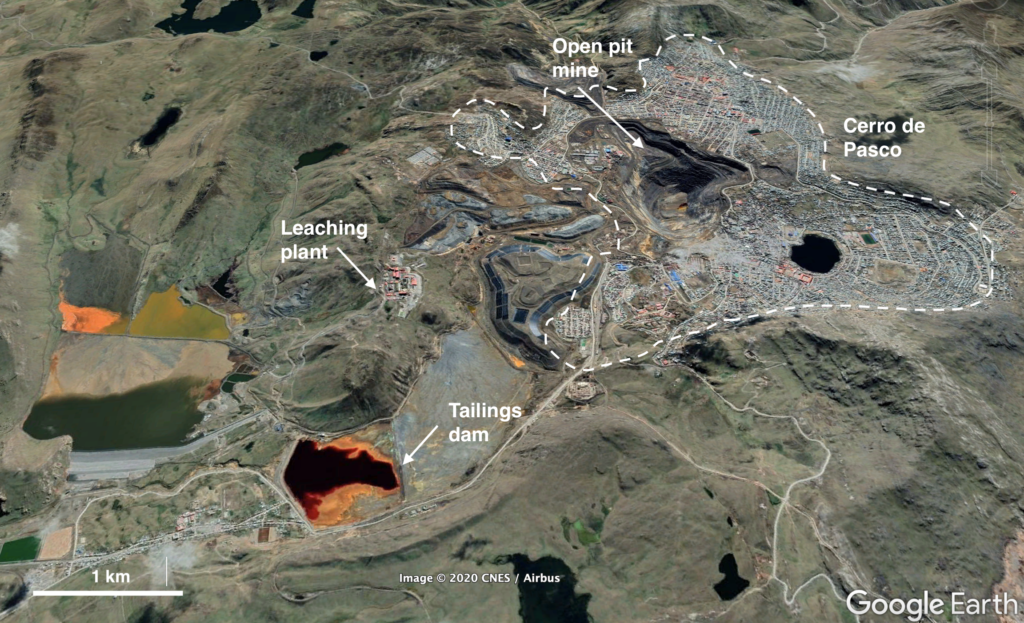Featured image: Anti mining protesters in Downtown Lima, Peru. Photo credit: Geraint Rowland on Flickr (CC BY-NC 2.0).
Paper: Citizen science campaign reveals widespread fallout of contaminated dust from mining activities in the central Peruvian Andes
Authors: James B. Molloy, Donald T. Rodbell, David P. Gillikin, and Kurt T. Hollocher
At the heart of Cerro de Pasco, Peru, one of the highest cities on Earth, is an enormous open pit mine. People have been mining at the Cerro de Pasco site since pre-Incan times, but after silver was discovered there in the 1630s, it became one of the world’s richest and most heavily worked mines.
The land around Cerro de Pasco is barren and dusty, the soil is contaminated with alarmingly high levels of heavy metals, and the water is a strange colour. Toxic dust churned up by mining is laced with lead, arsenic, copper and zinc: it floats in through windows, taints drinking water, and contaminates crops and meat. The city’s children are widely afflicted with congenital malformation and neurodevelopmental disorders linked to lead exposure. In 2008, the Peruvian Congress passed a law to relocate the entire city – a population of more than 70,000 – away from the contaminated land around the mine. But, as of 2020, residents are still waiting. In 2012, Peru’s government tried again, declaring a state of environmental emergency in Cerro de Pasco. Plans were made for the piles of dust to be covered and re-vegetated, but only a few scrappy saplings were planted.

With concern mounting over the contamination, local citizens have taken matters into their own hands. Armed with trowels and sample bags, they collected hundreds of soil samples and a selection of plant samples from the Junín Plain, central Peru, covering an area of more than 1000 km². Each sample was linked to a precise collection location using GPS. The investigation was part of a citizen science campaign led by a group of scientists from New York state.
In the lab, lead author James Molloy and colleagues analysed the samples collected by Cerro de Pasco residents using an inductively coupled plasma mass spectrometer. The spectrometer measures the amount of each element present in the soil and plant material by superheating each sample to roughly 7,000 kelvin (that’s hotter than the sun) and separating its elemental components with a large magnet. The team found that the samples collected from within a 10 km radius of the mining centre were the most contaminated, with dangerously high levels of arsenic and lead. They also found contamination had spread as far as 30 km to the south-southwest of the mine itself, in the direction of prevailing winds. This meant that, during the dry season, when the dust is highly mobile and the wind averages speeds of 28 km/h, the dust may be traveling on the wind for as much as 1 hour – long enough for toxic particles to be breathed in.
Environmental contamination from the Cerro de Pasco mine is not exactly breaking news – the problem has been acknowledged by the Peruvian government for years – but the citizen science campaign carried out by city residents along with Molloy and co-authors shows just how large the footprint of the contamination really is.

Citizen science project identifies extensive mining pollution in central Peru by Erin Martin-Jones is licensed under a Creative Commons Attribution-NonCommercial 4.0 International License.


One Reply to “Citizen science project identifies extensive mining pollution in central Peru”